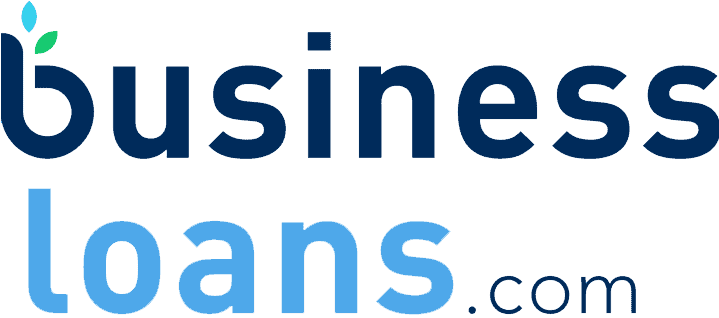If you do not meet the conditions of your loan and stop making payments, you might default. Find out what defaulting on a loan means and what happens next.
An SBA loan default is serious, and if you are facing this situation it may feel like the end of the world. If your business lacks funds to make payments for your loan, here’s what you need to know about delinquency and defaulting on SBA loans.
SBA Loan Default VS Delinquency
A loan will go into default when a borrower repeatedly fails to meet the legal conditions of the loan. Before you default on a loan, chances are the loan will first be deemed delinquent. Although they aren’t exactly the same problem, both loan delinquency and default can do serious damage to your credit score.
A loan becomes delinquent as soon as you have missed or are late making a payment, even if only by one day. If your loan becomes delinquent, your lender may charge you late fees or increase your interest rate. If you don’t take care of a delinquent loan quickly, it can easily lead to a default.
When Is My SBA Loan In Default?
Depending on the specifics of your loan agreement, a delinquent loan will fall into default status after a certain amount of time has passed and no action has been taken on the outstanding balance. Lenders will usually wait anywhere from 90-120 days before considering a delinquent loan to be in default.
What Happens If You Default On An SBA Loan?
If you aren’t able to make your SBA loan payments, your loan may go into default. The lender will then begin standard loan collection procedures, as outlined in your SBA loan agreement.
The Lender Makes Contact
When you’re delinquent on your loan, your lender will contact you via phone and email. You should know that FTC guidelines that restrict how often, when, and how collectors may contact you don’t apply to business loans, so any restrictions on this communication will depend on which state your business operates.
The most important thing to remember is to communicate with your lender. Avoiding your lender is only going to make the problem worse, so make sure to respond to phone calls, letters, and emails promptly.
The Lender Seizes Collateral
After defaulting on your SBA loan, the lender will be able to seize any collateral used to secure the loan. If your business has failed and there are no remaining business assets to fulfill repayment, your personal guarantee will be invoked.
Alternatively, the lender may force you to sell your assets or will obtain a court order demanding funds from your business accounts.
The Lender Files An SBA Guarantee
If the loan is still not repaid in full, the lender will then file with the SBA for the guaranteed portion of the loan minus any amount collected through alternative means.
While the SBA has paid the lender for the defaulted loan, the process is not over yet. The SBA will contact you to repay the funds, as per your loan agreement. This communication will come in the form of a “60-day demand letter.” This letter states that your case will be transferred to the Treasury Department if you don’t respond within 60 days.
The Borrower Negotiates With An Offer In Compromise
If you’re unable to pay the SBA, you can put together an offer in compromise to settle your debt. An offer in compromise may be a reduced lump sum amount or a proposed payment plan.
When creating an offer in compromise, you will need to prove that you are unable to repay the SBA within 60 days. You will need to provide documentation such as:
- Tax returns
- Documentation for business & personal assets
- Income statements
- Expense reports
If you can prove that you’re unable to repay your debt, the SBA might accept the offer, even if it amounts to less money than you owe.
The Case Is Transferred To The Treasury Department
If you do not respond to the 60-day demand letter or the SBA does not accept your offer in compromise, your case will be transferred to the Treasury Department. From this point, the Treasury may:
- Garnish wages
- Withhold future tax refunds
- File a lawsuit in civil court
The Treasury will collect the debt by any means necessary if you have not resolved your defaulted loan by the given deadline. While it is still possible to settle at this point, it is much more difficult, so it’s recommended that you work with the SBA before it gets to this point.
How To Avoid Defaulting On Your SBA Loan
Here are several ways you can avoid default. The first way is to pay your loan on time and follow the legal conditions of your loan. However, if that becomes impossible, there are other ways to reduce your risk.
Review Your Finances
Before you miss a loan payment and put your credit and assets at risk, take a close look at your finances. It’s possible that you may find ways to cut expenses, freeing up more funds to put toward your loan payment.
Running cash flow forecasts is also a good way to evaluate if you’ll be in a good financial position to continue paying your loan in the months ahead. While not perfectly accurate, cash flow forecasts give you a glimpse into your future financial situation and can be used to make changes now to avoid defaulting on your SBA loan.
Communicate With Your Lender
If you’re struggling to make payments on your loan, you should first contact your lender to discuss your position. This is always preferable to waiting until the problem worsens. You may find a better way to fix your temporary financial issues by speaking with your lender transparently rather than waiting for the loan to go into default.
Create A Modified Repayment Plan
If you communicate honestly with your lender, they may be open to helping you create a more feasible payment plan or reducing the overall cost of your loan. SBA partner lenders are almost always willing to work with borrowers since they lose money when they have to chase down someone in SBA loan default.
You can expect any proposed repayment plan to be largely in favor of the lender, but it will most likely be a better option than defaulting.
Hire A Professional
While not the most cost-effective option, it may be a good idea to hire a professional if you’re at risk of defaulting on your loan.
A CPA can help you sort out your finances, helping you find ways to cut costs and continue making your loan payments. If you’re already delinquent or in default, an attorney can help you negotiate with the lender and the SBA and draft an offer in compromise.
The Bottom Line On SBA Loan Default
Above all else, remember that defaulting on an SBA loan is serious, but it is not the end of the world. Although it can be stressful, recovering after you’ve settled the debt is possible. Do what you can to avoid defaulting, keep communications open, and continue to work to improve your business’s financial health.










